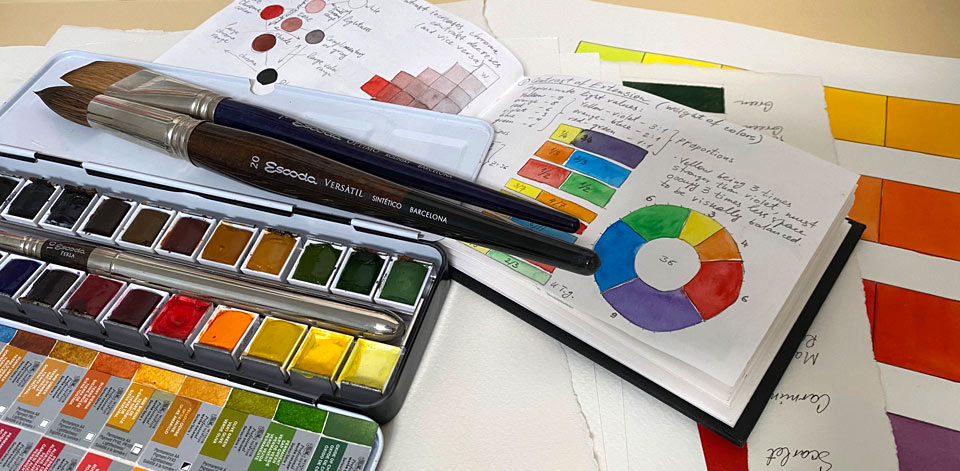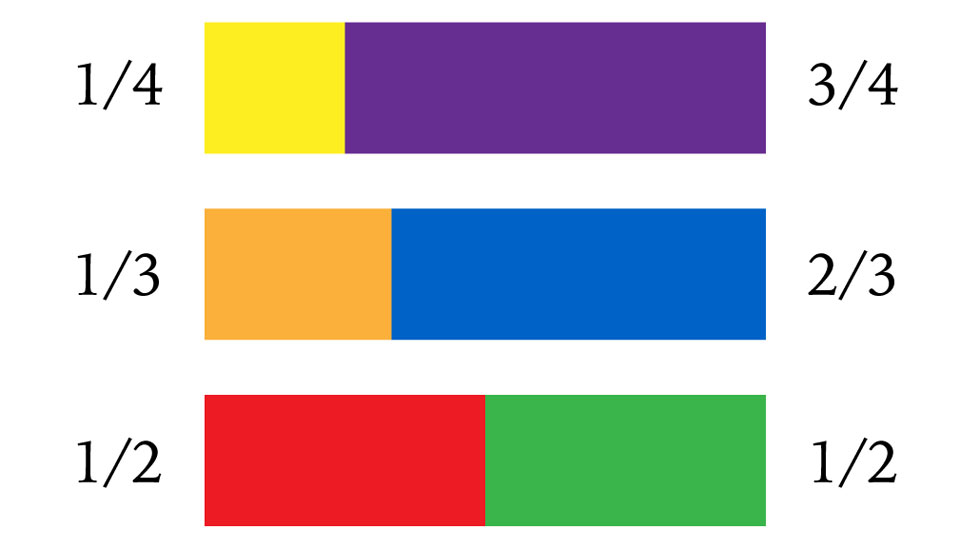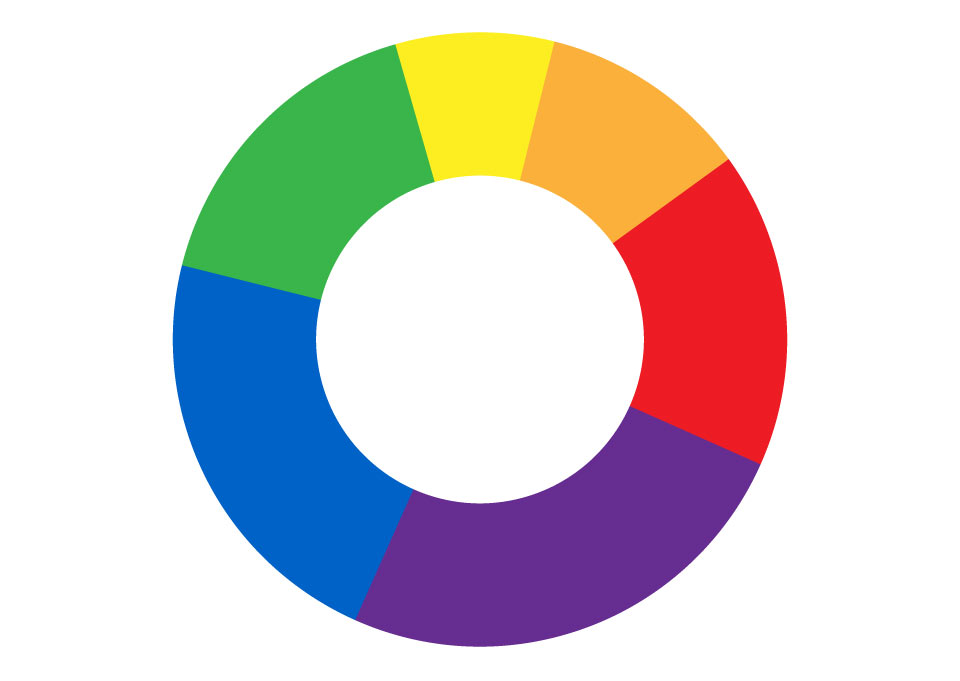A self-study, self-paced course where you can learn how to paint in watercolor by watching video lessons and doing assignments
$297 USD
ENROLL NOWA self-study, self-paced course where you can learn how to paint in watercolor by watching video lessons and doing assignments
$297 USD
ENROLL NOWOne-to-one, unlimited and custom-tailored to your skills and needs Personal Tutoring by the Watercolor Academy teachers
$997 USD
ENROLL NOWVideo lesson by Vladimir London
In this video lesson, you will discover what the contrast of extension is, and how to use it in painting.
When we take two different colors in full saturation, one color may appear stronger than the other. The strength of color can also be referred to as its 'weight'. For example, two equal-sized swatches, yellow and violet, have different strengths. The yellow swatch appears stronger, or as we may say, 'heavier', than the violet one. To be visually in balance, the violet swatch has to be bigger in size. The Contrast of Extension deals with the relative proportion of areas filled with different colors, in order for those colors to look in balance.

The values of visual strength, or weight, of colors from strongest to weakest are as follows:

Since saturated yellow is visually three times stronger than violet, for these two colors to be in balance, yellow has to occupy three times less space on an artwork, so as not to overpower the violet color.
According to the light values of the orange and blue colors, the orange color is twice stronger than blue; therefore, to be in balance, orange has to take half the space in an artwork than the areas painted in blue.
Red and green colors have equal weighting, so should one color take more space in an artwork, it will overpower the other.
According to the Contrast of Extension, the color wheel of primary and secondary colors should look as follows:

A color circle that follows this will look visually in balance, with every color being equal to all other colors, in terms of the space it occupies. These types of relative proportions are called 'harmonious' proportions, which means that any two colors used in proportion to their weights will look harmonious and balanced.

Let's see how the Contrast of Extension applies in painting...
A self-study, self-paced course where you can learn how to paint in watercolor by watching video lessons and doing assignments
One-time payment - Lifetime membership
$297 USD
One-to-one, unlimited and custom-tailored to your skills and needs Personal Tutoring by the Watercolor Academy teachers
One-time payment - Lifetime membership
$997 USD